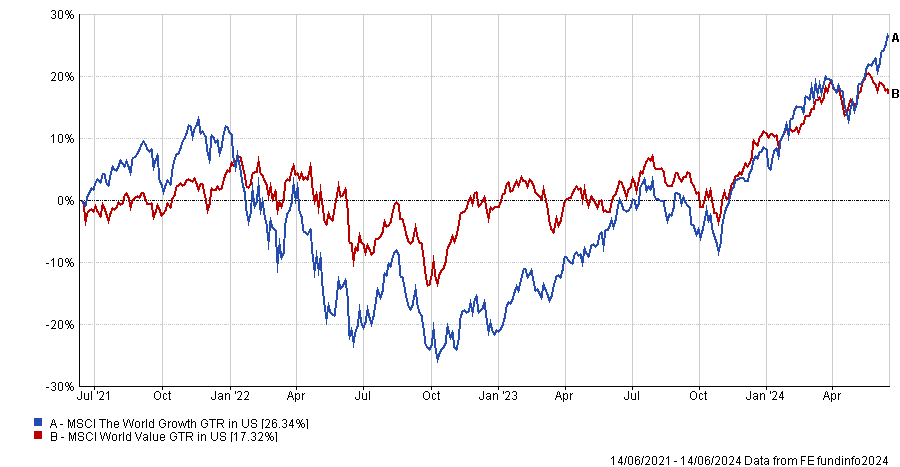Investors take comfort in knowing that a quantitative strategy won’t have any unintended surprises in their portfolio, while classic bottom-up stock-picking funds are inherently more volatile given their concentration.
This is according to Benjamin Dunn (pictured), head of quantitative strategies at Eastspring Investments.
“The misconception is that quantitative strategies are in some ways a black box, which I think typically if done well is not the case,” he told FSA. “They can be quite transparent.”
“We’re looking at factors that are well rewarded through time, and having identified them, we combine them in such a way that they you get that diversification benefit.”
“I think there’s a lot of parallels between how a quant investor looks at the world and how a fundamental investor works,” he added. “Many of the factors that we talk about are fundamental in nature.”
Dunn said a fundamental investor will start with stocks where they have done the deep research, fill up the portfolio with the most promising ones and potentially, unintentionally build up exposure to some common factors.
Whereas quantitative strategies will build portfolios starting with factors, such as value, momentum, quality, etc. and then fill a portfolio with stocks.
“I think it’s well understood that the market goes into different phases of what’s being rewarded,” Dunn added. “The understanding that these factors drive stock prices is reasonably well accepted.”
Indeed, it has been shown that over time there are periods when growth stocks outperform value stocks and vice versa.
There was a time a few years ago when some investors declared value investing dead after over a decade of underperformance, until 2022 when value investing finally came to the fore again.

“What’s really appealing about the multi-factor approaches is you don’t necessarily need to know which factor is to the fore,” Dunn said.
A multi-factor quantitative investment strategy invests in a portfolio of stocks aiming to get exposure to a combination of known factors such as value, quality, low volatility, momentum and size.
“What you’re backing is the idea that more often than not, a combination of these factors is doing quite well – even if I can’t tell you today which ones are going to do well next month or next year,” he explained.
“When we look at the full spread of all the factors we put in our model, the benefit comes from the fact that they have low correlation with each other,” he added.
This is quite different to a fundamental bottom-up growth or value manager who will often have a narrative or investment style that they focus on to find stocks they believe can deliver alpha in the future.
Dunn said: “You’ll be convinced by how they tell the story of what they do, but there’s a chance that tomorrow they wake up and then think about the world differently and do it differently. So maybe you don’t get what you thought you bought originally.”
In contrast, the repeatability of a quantitative investment process is often seen as a big strength for some investment clients, which is why they prefer this type of strategy for their core equity exposure, Dunn said.
“Not waking up to a massive bet on energy”
By design, quantitative strategies also tend to place a high emphasis on risk management to avoid unintended exposures to factors.
“It’s very core to the process to manage risk,” Dunn said. “All the unintended risks that live with any portfolio are very well controlled.”
“So you’re getting what you think you’re getting: you’re getting this exposure to the desirable factors but you’re not going to wake up and find out that the portfolio is taking a massive bet on energy or a massive bet on tech.”
Since the strategies are process driven, they can be back tested for different market environments which gives some clients added confidence, Dunn said.
“There’s a lot of rigour that you can bring to the conversation that can help build confidence in what it is that a client is actually buying,” he said.
“Then there is that confidence that now that they have spent the time and understood what the process is, they know what it’s going to do tomorrow; it’s going to be repeated.”
One criticism against quantitative strategies, however, is that to gain exposure to all the different factors constantly could lead to high portfolio turnover and transaction costs as the market shifts and evolves.
Dunn admitted this means that there must be a trade-off between maximum exposure to all the factors and minimising portfolio churn.
“What we strive for is turning over the portfolio enough to get the most benefit we can, but not so much that we negate all that benefit with transaction costs,” he said.
Another criticism is that there are limitations to how well a quantitative strategy can identify sources of alpha in the form of founder vision and quality management.
Fundamental bottom-up stock pickers will often cite their ability to identify high quality management teams or founders with track records of building strong businesses before it is recognised by the wider market.
They may argue that a human fund manager meeting a management team can gather insights even the most comprehensive quantitative screen can’t, or that management quality is an important factor that often only a human can judge.
However, Dunn suggested that the way a quantitative approach is detached from management teams can be a positive. “We’re not sitting there saying they’re a solid CEO, their vision is good,” he said. “We’re reflecting on the outcomes rather than on the individuals.”
He said that management quality can instead be assessed through financial ratios that are either balance sheet driven, cash flow driven, or a reference to cash flow relative to assets or profits.

















